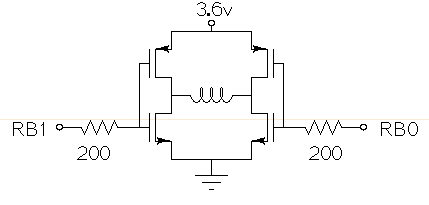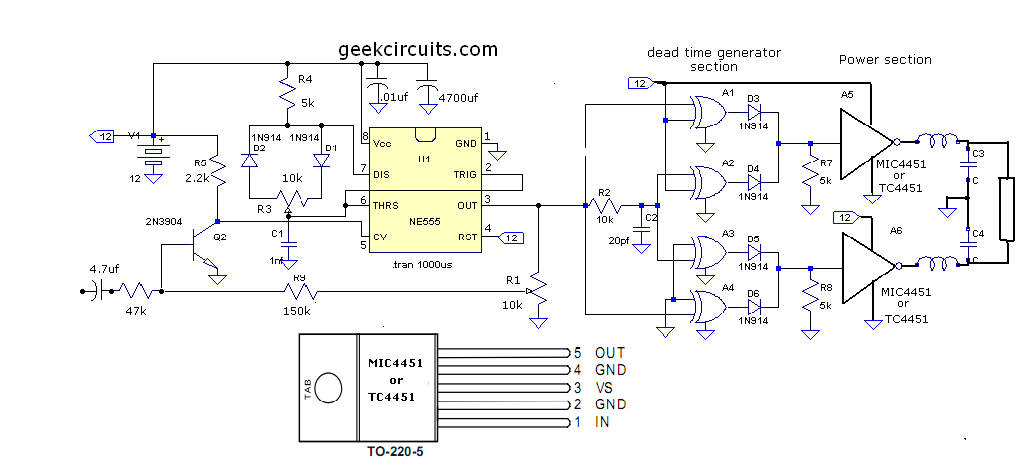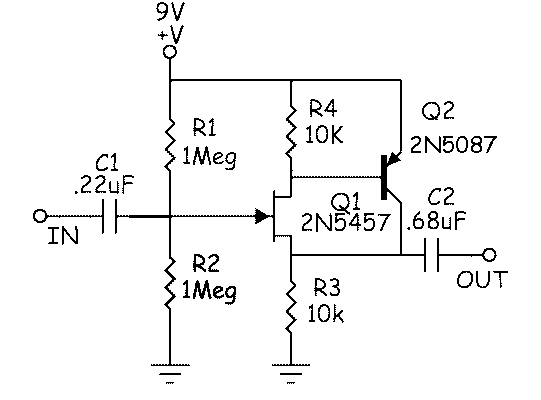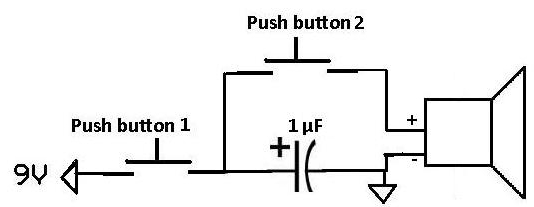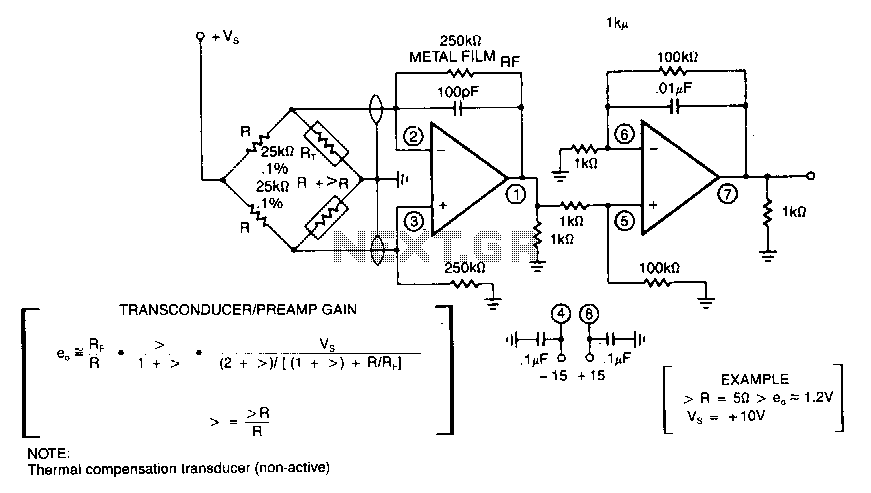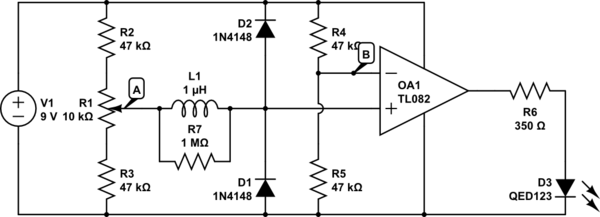
h bridge Where to place decoupling capacitor
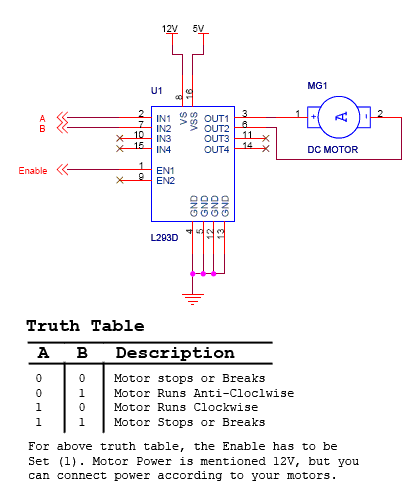
This circuit is designed to drive a motor, and it has been suggested that a decoupling capacitor should be included to mitigate voltage spikes. There are conflicting opinions on the placement of this capacitor; some advise positioning it close to the integrated circuit (IC), while others recommend placing it between the battery terminals instead of in front of the IC. An image of the circuit layout on a breadboard is available for reference.
In the context of driving a motor, proper decoupling is critical to ensure stable operation and to protect both the motor and the control circuitry from voltage transients. Voltage spikes can occur when the motor is switched on or off, or when it experiences sudden changes in load. A decoupling capacitor acts as a local energy reservoir, providing instantaneous current to the IC during these transient events, thus smoothing out the voltage variations.
The optimal placement of the decoupling capacitor is crucial. It is generally advisable to place the capacitor as close to the power supply pins of the IC as possible. This minimizes the inductance of the traces connecting the capacitor to the IC, allowing it to respond more effectively to rapid changes in current demand. If the capacitor is located too far from the IC, its ability to filter out high-frequency noise may be compromised.
While some may suggest placing the decoupling capacitor between the battery terminals, this approach may not provide the same level of immediate response to voltage spikes affecting the IC. The capacitor should ideally be placed directly across the power supply pins of the IC to ensure that it can effectively decouple the power supply from the IC's operational demands.
In summary, for this motor-driving circuit, the decoupling capacitor should be positioned as close as possible to the IC's power supply pins to achieve optimal performance and protection against voltage spikes. Proper layout and placement are essential to ensure the reliability and efficiency of the circuit.Using this(also below in question) circuit to drive a motor, and I heard I should put a decoupling cap in there to smooth out voltage spikes. I have been told to put it close to the ic, and I have also been told not to put it in front of the ic, but between the battery terminals.
Where should it go Here`s an image of how I have it worked out on the breadboard: @MikeJ-UK my first thought when I saw the truth table was "Who would ever design a chip that forces you to always have 2 pins inverted of each other or a motor breaks. " Then I realized what it was trying to mean. Kellenjb Apr 8 `11 at 14:26 🔗 External reference
In the context of driving a motor, proper decoupling is critical to ensure stable operation and to protect both the motor and the control circuitry from voltage transients. Voltage spikes can occur when the motor is switched on or off, or when it experiences sudden changes in load. A decoupling capacitor acts as a local energy reservoir, providing instantaneous current to the IC during these transient events, thus smoothing out the voltage variations.
The optimal placement of the decoupling capacitor is crucial. It is generally advisable to place the capacitor as close to the power supply pins of the IC as possible. This minimizes the inductance of the traces connecting the capacitor to the IC, allowing it to respond more effectively to rapid changes in current demand. If the capacitor is located too far from the IC, its ability to filter out high-frequency noise may be compromised.
While some may suggest placing the decoupling capacitor between the battery terminals, this approach may not provide the same level of immediate response to voltage spikes affecting the IC. The capacitor should ideally be placed directly across the power supply pins of the IC to ensure that it can effectively decouple the power supply from the IC's operational demands.
In summary, for this motor-driving circuit, the decoupling capacitor should be positioned as close as possible to the IC's power supply pins to achieve optimal performance and protection against voltage spikes. Proper layout and placement are essential to ensure the reliability and efficiency of the circuit.Using this(also below in question) circuit to drive a motor, and I heard I should put a decoupling cap in there to smooth out voltage spikes. I have been told to put it close to the ic, and I have also been told not to put it in front of the ic, but between the battery terminals.
Where should it go Here`s an image of how I have it worked out on the breadboard: @MikeJ-UK my first thought when I saw the truth table was "Who would ever design a chip that forces you to always have 2 pins inverted of each other or a motor breaks. " Then I realized what it was trying to mean. Kellenjb Apr 8 `11 at 14:26 🔗 External reference
